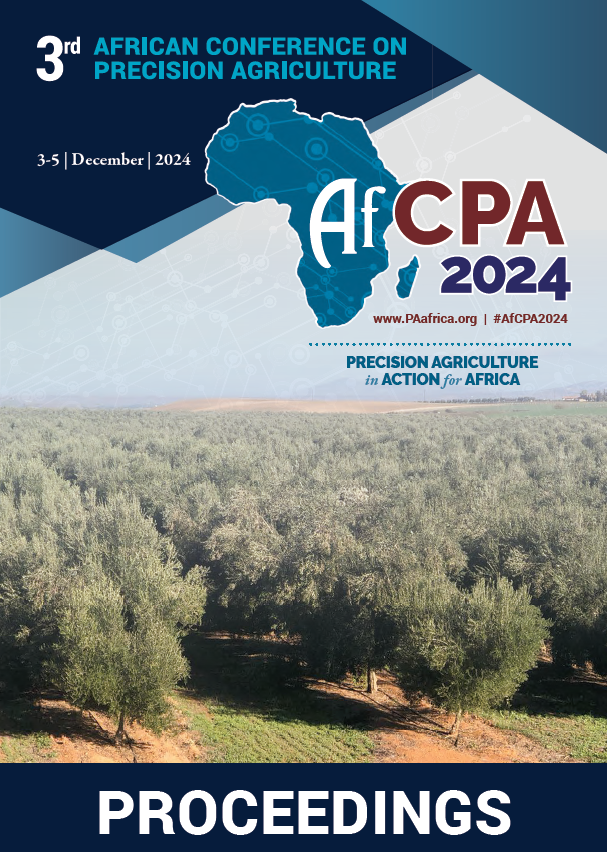Download the Conference Proceedings
Get your copy of the 2024 African Conference on Precision Agriculture Proceedings today! Download the PDF file and view all of the available proceedings.
Proceedings
Authors
| Filter results1 paper(s) found. |
|---|
1. Optimizing Durum Wheat Nitrogen Nutrition Index (NNI) Prediction Through Sentinel-2 Vegetation Index IntegrationNitrogen is crucial for durum wheat growth and productivity, but excess or insufficient levels can harm both the environment and farmers' finances. Remote sensing offers rapid, cost-effective, and nondestructive ways to assess crop nutrition, with vegetation indices (VIs) indicating plant health. This study aims to enhance the accuracy of durum wheat nitrogen status prediction by investigating modified formulations of Nitrogen Nutrition Index (NNI) coupled with various vegetation indices (VIs),... N. Boughattas, K. Marwa, Z. Mohamed, A. Sawsen, A. Soumaya, H. Hafedh, H. Imen, T. Youssef |
